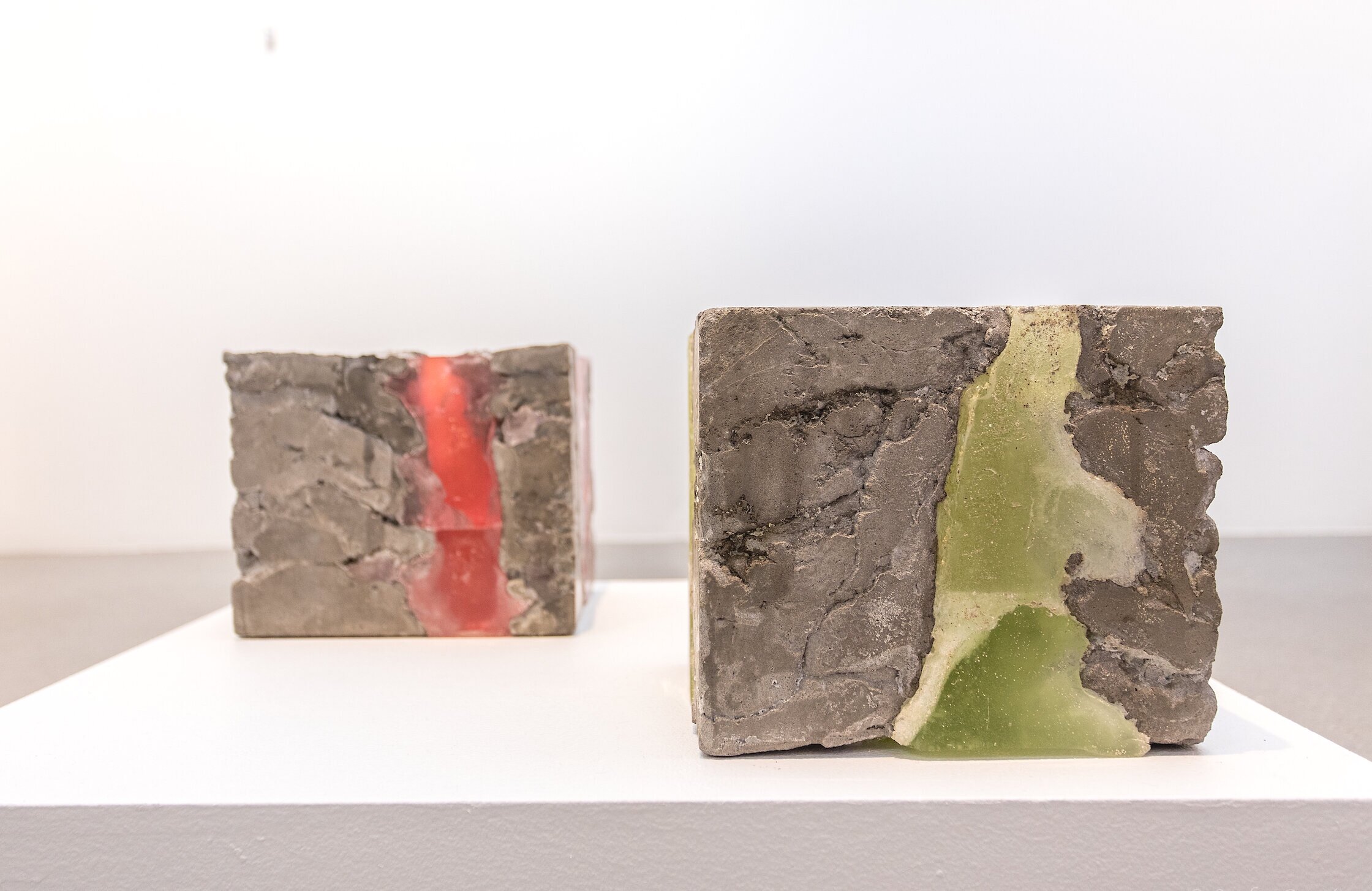Body of Work
Holding Space : within/without
consists of four pieces that investigate various levels of dichotomy relating to internal/external as a means of subverting hierarchal binaries. Inside|Outside|Inbetween employs the body as a means to explore duality from its appearance in our social structure, to our digestion of life itself. The objects move progressively into abstraction with Oscillate to reify that our identities are not bound to binaries, we oscillate fluidly between opposites. The series continues with Union, a minimal representation of a Venn diagram in sculptural form. Visually two spheres merging into one another, standing as a simple exemplification of the union and inseparability of opposites, which becomes a dissolution of boundaries. Finally with Vibrant Emptiness: Illuminating Cracks in the Mundane, two industrial concrete cubes illuminated with a resin filling, reference to breaking out of the mundane, highlighting fringe experience beyond this seemingly-solid immovable shape. Vibrant Emptiness serves as both the punctuation and parting question to the previous works suggesting we move beyond socially-constructed concepts and into engaging the act of questioning (opening) itself.
When relating with the female form, this exploration is closely followed by a dialogue of oppression which in turn is inseparable from looking towards hierarchical binaries. Informed by Luce Irigaray’s illustration of patriarchal society, taking male as subject, woman is allocated as “other” and further refuting this dynamic through Jaques Derrida’s deconstruction theories, I subvert false social binaries through experimental play. I argue that as one is dependent on the other, neither is autonomous; the relationship is not fixed in solid binaries. This argument is applied through medium and form to subvert power dynamics at the root misunderstanding; dualism. I objectify polar values through industrial media: plastic and concrete, and the fine material silver. Silver endows value, while plastic and concrete pertain to industrial utility. Beginning with the body and progressing into abstraction, each object explores the relationship between high and low, value and degradation, object and space, inside and outside, through continuous deconstruction and conversely, union of material.
The act of exchanging the role between object and negative space, alludes to the hierarchal relation exemplified by Feminist and Deconstruction theorists. The negative space represents the margins of experience, which is not represented as the dominant viewpoint or perspective. In casting the empty space there is an active claiming and acknowledgement of this margin, establishing the physical space for it to be considered.
Each medium moves through various iterations of objectification and empty “holding” space, adopting the role of container verse subject. This fluid dynamic between materials becomes a visual experiment, and plea, not to assert power to one binary over another but to expose the illusion of binary altogether. The pieces themselves are a reflection of life’s ability to hold space for the complexity of both. This visual questioning is not with the intent of finding an answer, but engaging the process of questioning itself, and opening to new possibilities with tolerance and compassion.




















